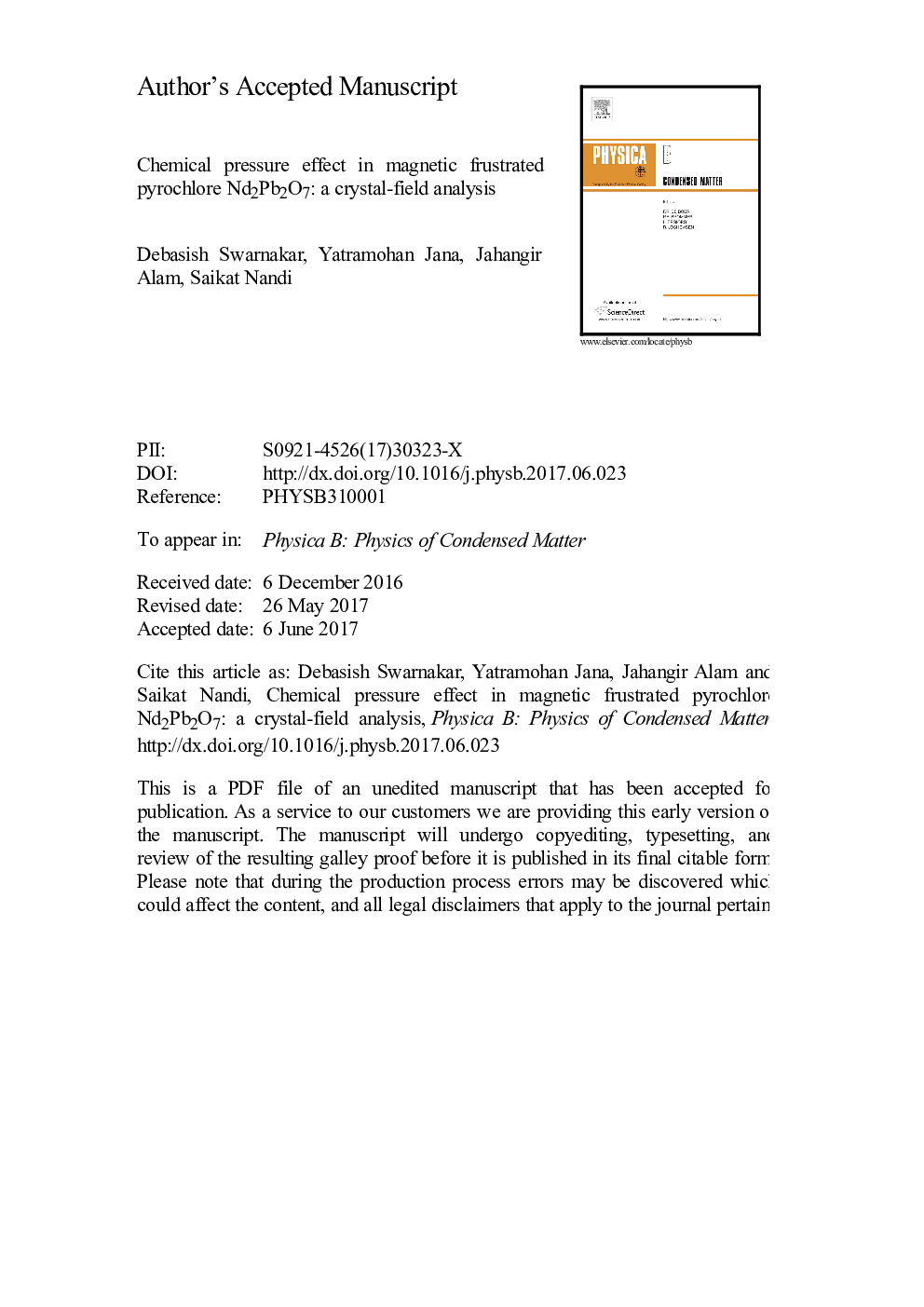| Article ID | Journal | Published Year | Pages | File Type |
|---|---|---|---|---|
| 5491787 | Physica B: Condensed Matter | 2017 | 22 Pages |
Abstract
Variation of chemical pressure at R-site due to substitution of nonmagnetic cation of varying size at the M-site makes a fine tuning between the crystal-field and molecular field to adopt exotic ground states in the frustrated magnetic R2M2O7 pyrochlore structures. Presence of larger cation at M-site increases the lattice parameter or nearest-neighbor bond distance between magnetic R-spins, and causes subtle changes to the local oxygen environment surrounding each R-ion, thereby reduces the chemical pressure at R-sites which leads to a dramatic change in the crystal-field and molecular field at R-site. To explore the effect of chemical pressure, the experimental results of powder magnetic susceptibility and isothermal magnetization of a geometrically frustrated compound, Nd2Pb2O7 containing largest cation, e.g. lead (Pb), at M4+-sites are simulated and analyzed employing a D3d crystal-field (CF) and anisotropic molecular field at R-sites in the self-consistent mean-field approach. The second-ordered axial parameter B20 and total CF splitting of the ground multiplet 4I9/2 of Nd3+-ions became the lowest among the isomorphic Nd-pyrochlore compounds, implying reduced effect of the crystal-field at Nd sites. Nd2Pb2O7 has strong [111] Ising anisotropy. Relative strength and values of the exchange tensor among nearest-neighbor Nd3+-spins in Nd2Pb2O7 and Nd2Zr2O7 result in a very close competition of anti-ferromagnetic and ferromagnetic interactions.
Related Topics
Physical Sciences and Engineering
Physics and Astronomy
Condensed Matter Physics
Authors
Debasish Swarnakar, Yatramohan Jana, Jahangir Alam, Saikat Nandi,
